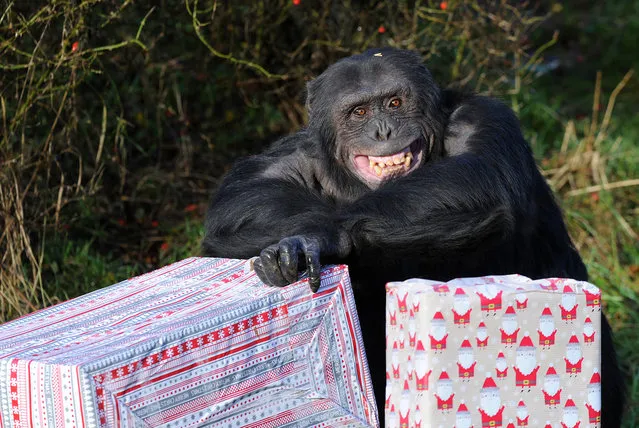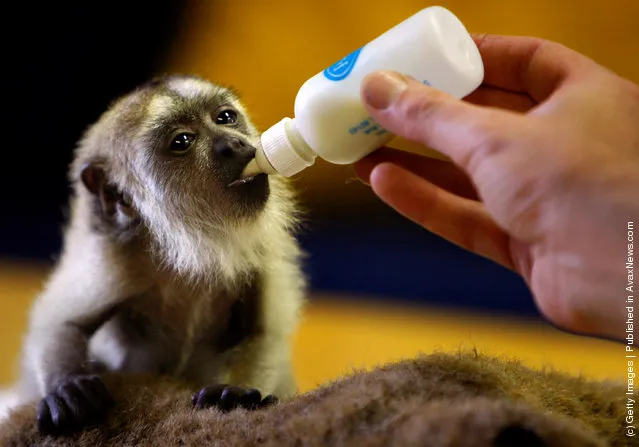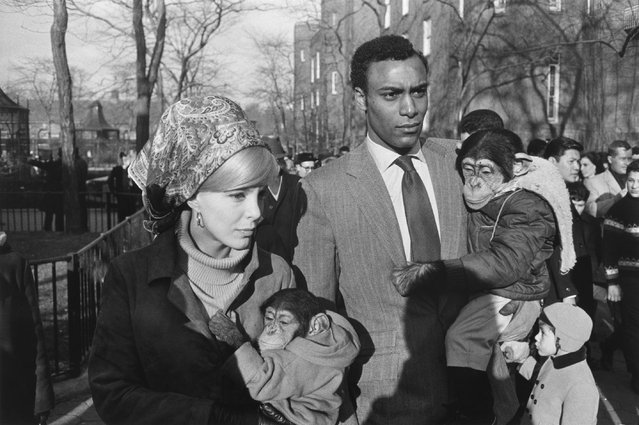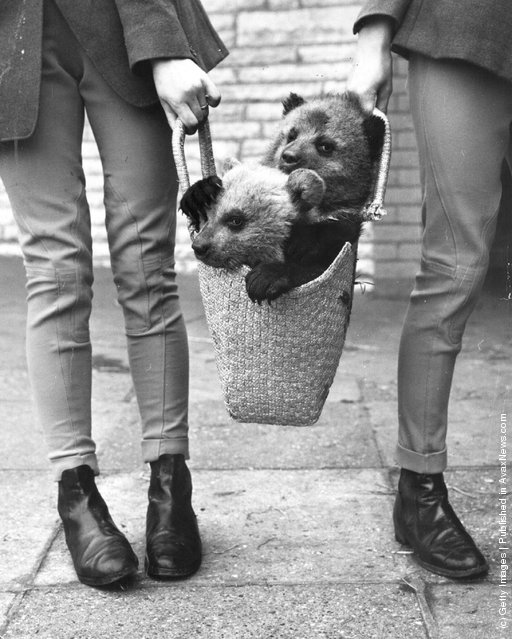28 Nov 2015 08:02:00,post received
0 comments
Details

A Chimpanzee opens its Christmas presents at ZSL Whipsnade Zoo on December 17, 2013 in Bedfordshire, England. (Photo by Tony Margiocchi/Barcroft Media)
26 Dec 2013 11:54:00,post received
0 comments

A panda bear sits on a logs in a zoo on January 15, 2015 in Hangzhou, China. (Photo by Feature China/Barcroft Media)
17 Jan 2015 12:56:00,post received
0 comments

A baby Chimpanzee plays in its enclosure at Taronga Zoo July 14, 2006 in Sydney, Australia. (Photo by Ian Waldie/Getty Images)
08 Oct 2011 13:22:00,post received
0 comments
Details
28 Nov 2011 12:00:00,post received
0 comments

A zoo keeper feeds Diego, a three month old howler monkey, which is reared at Edinburgh Zoo, July 29, 2008 in Scotland. (Photo by Jeff J. Mitchell/Getty Images)
18 Dec 2011 11:36:00,post received
0 comments

A woman looks at traditional Ukrainian Easter eggs “Pysanka”, installed as part of the upcoming celebrations of Easter, in central Kiev, Ukraine, April 29, 2016. A pysanka is a Ukrainian Easter egg, decorated with traditional Ukrainian folk designs using a wax-resist (batik) method. The word pysanka comes from the verb pysaty, “to write”, as the designs are not painted on, but written with beeswax. Many other eastern European ethnic groups decorate eggs using wax resist for Easter. These include the Belarusians, Bulgarians, Croats, Czechs, Hungarians, Lithuanians, Poles, Romanians, Serbs, Slovaks, Slovenes and Sorbs. (Photo by Valentyn Ogirenko/Reuters)
30 Apr 2016 09:00:00,post received
0 comments

A pro-Russian rebel guards a captured former Ukrainian Army checkpoint outside Vuhlehirsk, Donetsk region, eastern Ukraine, Thursday, February 5, 2015. The rebels have closed in around the town in a strategy they triumphantly refer to as the Debaltseve cauldron. Separatists recently burst through government lines in the rural settlement of Vuhlehirsk. (Photo by Vadim Braydov/AP Photo)
06 Feb 2015 13:11:00,post received
0 comments
Last searches:


